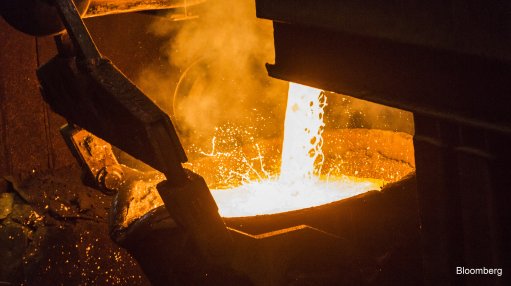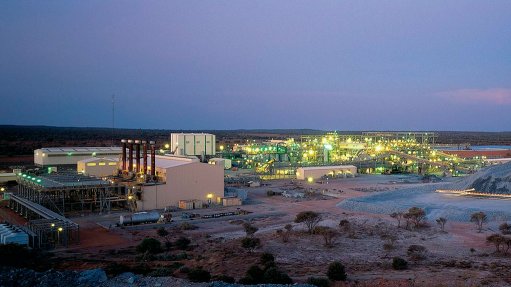Rio Tinto’s $3.9bn Mozambique coal bid may be scuppered by lack of rail, port capacity
Rio Tinto Group’s foray into Mozam-bique, which cost the world’s number two mining company $3-billion, has highlighted a lack of rail and port capacity that threatens to check a coal boom in the south-eastern African nation.
Rio Tinto bought coal producer Riversdale Mining for A$3.9-billion ($4-billion) in 2011 to access some of the world’s best untapped coking coal, in the Moatize basin, in Mozam-bique’s north-west Tete province. Now Rio Tinto is writing the value down by 70% and a person familiar with the matter says the London-based company is considering selling them.
While finding coal in Mozambique has been a cinch, exporting it has not. Rio’s plans have been stymied by the Mozambique govern-ment’s refusal to allow it to barge coal down the Zambezi river and by the cost of accessing or building rail lines to a port on the east coast. The bottlenecks may scupper Mozambique’s bid to become one of the world’s top five coking coal producers and expand a mining industry that currently accounts for less than 5% of gross domestic product.
“We see a lot of problems now with the big players who are putting big money into Mozambique,” says Peter Major, head of mining at Cape Town-based Cadiz Corporate Solutions. “There are stockpiles of coal and they can’t get it onto trains. Even if the trains get the coal to the port, the port can’t handle it.”
Mozambique, which began commercial coal production in 2010, boosted output to about five-million tons last year from 600 000 t in 2011, according to the International Monetary Fund (IMF). About 280-million tons of coking coal, used in steelmaking, are traded annually on the seaborne market.
The price of the fuel has dropped 30% since the start of last year to trade at $165/t on February 18. Mozambique mostly produces coking coal, while thermal coal is used in power plants.
“If they don’t resolve their transport prob-lems and the new supply is delayed, that could be supportive of prices,” says Bloomberg Industries analyst Andrew Cosgrove. Mozam-bique has the potential to become the world’s fifth-biggest exporter if it can boost output to more than 20-million tons, he adds.
Mozambique, which is bigger in size than France, has a 2 470 km coastline, three major ports – Nacala, Beira and Maputo – and 4 787 km of rail lines, according to the CIA World Factbook. Much of the transport system is in disrepair, a legacy of a 15-year-civil war that ended in 1992.
“Our main constraint is infrastructure,” Mineral Resources Minister Esperanca Bias told a conference in Cape Town on February 6. “We have the resources but my problem is how to put these resources into the market.”
Mozambique has issued about 100 explora-tion licences and is targeting coal output of 100-million tons by 2020.
Rio started exports from its Benga mine in June using the Sena rail line and Beira port, which currently limits its shipments to two-million tons annually. It planned to boost supply to about 12-mil- lion tons by barging coal down the Zambezi river and transferring it to larger vessels off- shore, while considering a new rail line for larger-scale exports. The Mozambique government rejected the barging proposal in March last year.
Bias said government had refused Rio permission because the river was not navigable. Rio says the development of a transport system to export coal has proved “more challenging” than anticipated and it is working with the Mozambique government to resolve the issue.
“Various studies have been done about the navigability of the Zambezi river,” Bias told reporters. “The studies done don’t recommend that the river be navigated. There are other alternatives that should be explored. The alternative that’s most efficient is rail.”
The impasse and a reduction in estimates of recoverable coking coal prompted Rio to write down its assets and contributed to the departures of CEO Tom Albanese and strategy chief Doug Ritchie, who led the acquisition.
“Our priority now is to find a suitable infra-structure solution through discussions with government so that we can move forward with the development of this asset,” Alan Davies, CEO of Rio’s diamonds and minerals unit, told the Cape Town conference on February 5.
Rio has not set a timetable for the review of its assets and may sell all or part of them, according to the person familiar with the matter, who declines to be identified because the information is private.
Rival Vale is spending $4.4-billion on rail and port facilities in Mozambique to export coal from its Moatize mine, having exhausted existing capacity.
The Mozambique government wants Rio to partner with Vale in extending and upgrading a 912 km rail line from Tete through Malawi to the Nacala port. The line could add 11-million tons to coal shipping capacity by mid-2016 and is expected to reach full capacity of 18-million tons by 2017, according to the IMF.
Rio de Janeiro-based Vale, which has been operating in Mozambique since 2004, currently exports 4.5-million tons of coal a year using the Sena line and the Beira port, says Rafael Benke, head of corporate affairs. It is spending $2-billion on a second phase of its Moatize mine that will double capacity.
The IMF expects transport bottlenecks to ease as new rail capacity comes on line, and projects coal production will reach nine-million tons this year. That should help boost economic growth in Mozambique to 8.4% from about 7.5% last year.
“Mozambique is rich in coal and they don’t need too many of those projects to come on line to really benefit the country,” Cadiz’s Major says. The big coal mines will ramp up production “but it’s probably going to be at half the rate and take double the time that we were all thinking three years ago”.
Comments
Press Office
Announcements
What's On
Subscribe to improve your user experience...
Option 1 (equivalent of R125 a month):
Receive a weekly copy of Creamer Media's Engineering News & Mining Weekly magazine
(print copy for those in South Africa and e-magazine for those outside of South Africa)
Receive daily email newsletters
Access to full search results
Access archive of magazine back copies
Access to Projects in Progress
Access to ONE Research Report of your choice in PDF format
Option 2 (equivalent of R375 a month):
All benefits from Option 1
PLUS
Access to Creamer Media's Research Channel Africa for ALL Research Reports, in PDF format, on various industrial and mining sectors
including Electricity; Water; Energy Transition; Hydrogen; Roads, Rail and Ports; Coal; Gold; Platinum; Battery Metals; etc.
Already a subscriber?
Forgotten your password?
Receive weekly copy of Creamer Media's Engineering News & Mining Weekly magazine (print copy for those in South Africa and e-magazine for those outside of South Africa)
➕
Recieve daily email newsletters
➕
Access to full search results
➕
Access archive of magazine back copies
➕
Access to Projects in Progress
➕
Access to ONE Research Report of your choice in PDF format
RESEARCH CHANNEL AFRICA
R4500 (equivalent of R375 a month)
SUBSCRIBEAll benefits from Option 1
➕
Access to Creamer Media's Research Channel Africa for ALL Research Reports on various industrial and mining sectors, in PDF format, including on:
Electricity
➕
Water
➕
Energy Transition
➕
Hydrogen
➕
Roads, Rail and Ports
➕
Coal
➕
Gold
➕
Platinum
➕
Battery Metals
➕
etc.
Receive all benefits from Option 1 or Option 2 delivered to numerous people at your company
➕
Multiple User names and Passwords for simultaneous log-ins
➕
Intranet integration access to all in your organisation


















